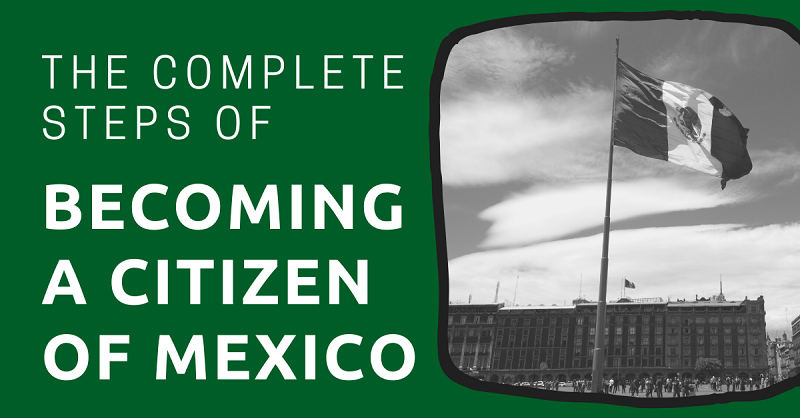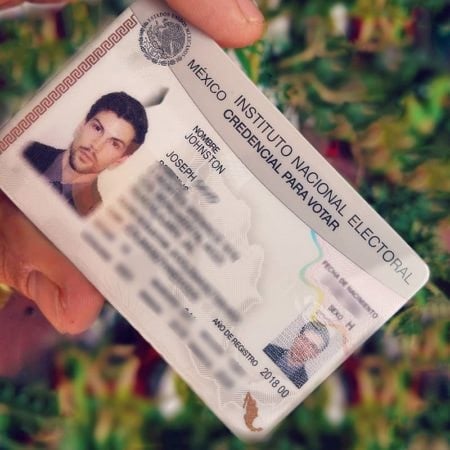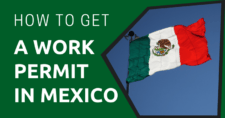
Many foreigners who live in Mexico eventually end up going back to their home countries, but a good number of them fall in love with the culture, climate, and people and decide to make Mexico their new home.
If you’ve been in Mexico for a while and you’re beginning to put down roots in Mexican soil, you may reach a point where you level up your Temporary or Permanent Resident status and apply for Mexican citizenship.
The procedure for becoming a Mexican citizen is called naturalization. This article will dive deep on Mexico’s naturalization process and give you an idea of what to expect when becoming a Mexican citizen.
This article will take approximately 18 minutes to read. Don't have the time right now? No worries. Email the ad-free version of the article to yourself and read it later!
Disclaimer: This article may include links to products or services offered by ExpatDen's partners, which give us commissions when you click on them. Although this may influence how they appear in the text, we only recommend solutions that we would use in your situation. Read more in our Advertising Disclosure.
Contents
Naturalization Process Overview
The typical naturalization process in Mexico goes something like this:
- Find a pathway that applies to you
- Prepare the paperwork
- Make an appointment online with your nearest “Secretaria de Relaciones Exteriores” (SRE) office
- Pay the fee at a bank
- Attend your SRE interview and submit your paperwork and proof of payment
- Upon approval, return to SRE to take the culture and language tests
- When it’s ready, pick up your naturalization certificate, known as the “Carta de Naturalization”
- Apply for your Mexican passport and voter’s ID
There are a number of pathways you can use to become a Mexican citizen and live in Mexico permanently. If you don’t have any family connections to the country, your best option will probably be applying for residence.
You can qualify for Mexican citizenship if you’ve had legal status as either a permanent or non-student temporary resident for at least five consecutive years or two years in certain special cases.
The paperwork preparation process will include a trip to Mexico City for a criminal background check as well as figuring out how to get an apostille seal on your birth certificate. Once your paperwork has been submitted and approved, you’ll need to take a couple of written tests gauging your familiarity with Mexican history, culture and language before you can finally pick up your “Carta de Naturalization” and apply for a Mexican passport.
Benefits
Let’s take a look at the key benefits of getting a Mexican citizenship
- Save time at the airport by avoiding the line at the immigration kiosk when leaving Mexico and using the quicker customs line for citizens when arriving
- Avoid annual visa renewal hassle and fees
- Move houses or change jobs without updating the “Instituto Nacional de Migración” (INM)
- Vote in elections or become a political candidate for certain government posts
- Own property in your own name near the coast and certain land borders without having to go through a bank trust
Limitations
There are some limitations after you get a Mexican citizenship, including:
- In Mexico, you won’t be legally permitted to identify as any other nationality besides Mexican for any reason, including seeking help or protection from your other home country’s consulate or embassy.
- Naturalized citizens aren’t able to join the police force or the Mexican military during times of peace, and they can’t work on any official Mexican aircraft or vessel as pilot, captain or even a member of the crew.
- You won’t be able to become a senator, state governor, Supreme Court justice or president of the country.
- You won’t be legally allowed to live outside of Mexico for more than five years in a row.
- Most countries allow dual citizenship, but there are a few rare exceptions in which you will have to give up your other passport.
- Your tax responsibilities in your other home country may change.
Related article: Mexico Income Tax for US Expats: Do You Need to Pay?
Requirements
The available pathways you can use to apply for Mexican citizenship include:
- Obtaining residence
- Having a direct Mexican descent
- Getting married to a Mexican citizen
- Being born in Mexico
- Having kids born in Mexico
- Being adopted by Mexican citizens
- Making outstanding contributions to science, art, sports, culture, etc.
All naturalization applications must be initiated at your state’s local SRE office.
To use the residence pathway, you’ll have to show that you’ve had legal non-student resident status in Mexico for a minimum of five consecutive years before your application.
If you were born in Mexico, there is no residence requirement. All the other pathways come with a residence requirement of two years except the adoption pathway, which requires one year of residence.

In all cases with a residence requirement, the expiration date on your residence card must be at least six months away from the date of your naturalization application.
Finally, you must not have lived outside of Mexico for more than six months in the two years before your application.
Paperwork Requirements
At your SRE interview, you’ll need to provide originals and at least one photocopy of the following documents:
- DNN-3 form printed and filled out by hand in capital letters using black ink. This form holds your personal info and states the reasons you want Mexican citizenship. At your SRE interview, you’ll finish filling it out by adding your photos and fingerprints.
- Your Permanent or Temporary Resident card valid for at least six months past your naturalization application date and showing that you’ve resided in Mexico for two or five consecutive years before your application. Two copies of this document are required.
- Your passport or other identity document from your country of origin. Two copies of all pages of this document are required.
- Your birth certificate with an official apostille seal. Getting an apostille seal usually has to be done in your country of origin and can cost a few hundred dollars. You may be able to send your birth certificate to a representative in your country of origin along with a letter of permission so they can get it sealed and send it back to you.
- If you’re applying via the marriage pathway or you changed your name when you got married, you’ll need your marriage license with an apostille seal.
- If your passport and birth certificate or marriage license don’t have the exact same name, you’ll need to make an officially notarized declaration that you’re the same person.
- If your birth and marriage certificates aren’t in Spanish, you’ll need officially notarized Spanish translations of both.
- If applying via the marriage pathway, you’ll need a notarized declaration by your Mexican spouse that you’ve been living together in Mexico for at least two years before your application date as well as proof of your spouse’s Mexican nationality.
- A letter declaring under oath how long you’ve been outside Mexico in the previous two years with specific dates. Two copies of this document are required.
- Certificates of your clean criminal record in Mexico issued by both the federal government in Mexico City and your local state government. These are called “Constancias de No Antecedentes Penales.”
- Two identical passport-sized photos of you in front of a white background.
- Bank receipt proving you paid the application fee
Financial Requirements
The naturalization fee changes regularly. The fee is $8,395 MXN right now. You can check if the amount has changed at this site.
You’ll need to pay the fee right before your first SRE interview. Here’s a list of banks that are certified by the government to receive payments online.
Moving to Mexico?
Subscribe to ExpatDen Premium Mexico and get expert tips that provide everything you need to live in Mexico, including:
- A Full Checklist of What to Do When Moving to Mexico
- An Easy Way to Start Renting an Apartment in Mexico
- Tips For Getting Medical Treatment in Mexico Without Insurance
- How to Save Money on Everything in Your Daily Life in Mexico
- How to Apply for a Mexico Visa on Your Own Successfully
…plus 30+ more essential insights, all for just US$3.33 per month.
You can also pay in person at any bank in Mexico if you print and fill out the assistance form known as the “Hoja de Ayuda.”
And you can visit this site to know how to fill out the different reference keys on your “Hoja de Ayuda” depending on your situation here.
Application Procedure
Here are the exact steps you need to take to apply for a Mexican citizenship.
Step One: Get Your “Constancias de No Antecedentes Penales”
Used to be one of the most challenging parts of getting the paperwork together, now it’s possible to get the federal “Constancia de No Antecedentes Penales” online without having to visit an administrative office in Mexico in person.
All you need to do is visit the link here, complete an online form, and upload all necessary documents as stated on the site. After that, pay a fee of around $212 MXN and download the document online.
Step Two: Make an Appointment With SRE
Once you have all your paperwork in order, it’s time to visit SRE to officially start your naturalization process.
You can make an appointment via the MiConsulado system. Here’s what you need to do:
- create an account
- Select the service you require (e.g., naturalization)
- choose an available date and time at your nearest SRE office.

Step Three: Pay for “Hoja de Ayuda”
Right before your SRE appointment, you’ll need to pay the application fee via an online transfer or by dropping by a bank with your “Hoja de Ayuda” to make a deposit. The bank will give you a receipt with an official seal either online or on paper.
Make sure to bring that receipt to your appointment. You should also keep a copy for yourself just in case.
Step Four: Visit Your SRE
At your SRE appointment, a government representative will assess your case in a brief interview. They’ll look through your paperwork to make sure all your documents are in order and ask you about your history, reasons for wanting Mexican citizenship, and plans for your future in Mexico.
Finally, they’ll attach your photos to your DNN-3 form and then help you add your fingerprints.
SRE’s website says you’ll hear back from them in a maximum of three months once they’ve sent your application to INM and gotten their opinion. If you have only entered and lived in Mexico legally and haven’t had any past problems with INM, you should receive a reply in about a month.
You’ll get an email with the good news and an invitation to return to your SRE office to take the dreaded naturalization tests.
Step Five: Take the Naturalization Tests
The final step before you officially become a Mexican is to take two written tests at your SRE office, a Mexican history and culture test, and a Spanish language test. Refugees, minors, and senior citizens over the age of 60 only need the Spanish language test and can skip the history and culture test.
Once you get your paperwork approved via email, you’ll return to SRE and be taken to a quiet private office for the tests. You’ll be given 10 minutes to take each one.
The history and culture test will have 10 questions, and you’ll need to get at least eight of them right. The Spanish language test has a reading comprehension section and a writing section where you’ll need to get five out of six items correct.
If you’re unable to pass a test, you can wait a minimum of 10 days to try again. You’ll get three tries, after which you’ll have to wait a year to submit another naturalization application and pay the fee again.
Before 2018, the government supplied applicants with a list of 100 questions and their answers, 10 of which would appear on the history and culture exam. In January 2018, SRE changed their testing policy, adding many new questions and no longer making any of them public.
They now give you a study guide full of links to encyclopedias and textbooks with a total of around 4,000 pages of reading material in Spanish. You can download the official study guide here.
The new questions are a potpourri of Mexico-adjacent trivia, including knowledge of renowned Mexican scientists, writers, architects, artists and astronauts, Mexican geography, traditional dishes of various Mexican states, Mexican scholastic requirements, Mexican economy, Mexican musical instruments, ancient Aztec gods, and details about the past and current system of government in Mexico.
If you need help, you can search online for information about the new Mexican citizenship exam. There are some good forums and even Quizlet flashcard sets that can give you a leg up.
The Spanish language exam is easier. You’ll be shown some pictures and asked to write a description of each in Spanish. You’ll then read a paragraph in Spanish and answer some questions about its content.
Step Six: Pick Up Your “Carta de Naturalización”
If you pass your tests, you’ll get an email in a few months letting you know that your “Carta de Naturalización” is ready. You can then go back to your SRE office to swear an oath of loyalty to Mexico, sign the final paperwork, and pick up your naturalization document.
Once your naturalization document is in your hand, keep it as safe as possible. If you happen to lose it for any reason, there will be a lot more paperwork to fill out and fees to pay. Congratulations on becoming a Mexican!
Final Step: Get Your Mexican Passport and Voter’s ID
You can apply for your Mexican passport the same day as you get your naturalization document and often in the same building. SRE also handles passport applications. Here’s an information on the paperwork requirements, service hours, and fees.

The principal ID used in Mexico is the official voter’s ID, which is called the INE. You can find all the necessary information to get your INE on this site.
How Much Will the Naturalization Process Cost?
We can add up all the expenses that you’ll most likely accumulate during your naturalization procedure to get a good estimate of how much the total process will cost. This will include minor expenses like copies and notarized translations as well as bigger expenses like your round-trip ticket to Mexico City to get your criminal background check.
Remember, many of the prices we state are subject to change and are only estimates.
If you apply for naturalization via the residence pathway, here are the expenses you can expect to accumulate:
- Naturalization application fee – $8,775 MXN
- Apostille seal for your birth certificate – $100 – $350 USD ($2,000 – $7,000 MXN), depending on your home country
- Criminal background check – $212 MXN
- Official translations – $500 MXN
- Photocopies – $300 MXN
- Photos – $200 MXN
In total, the naturalization process should cost somewhere around $12,000 MXN.
Can I Do It Myself?
This is one of the exclusive pieces of content created for our Premium subscribers. To read and unlock all of them, please become a Premium member.
Doing so helps ExpatDen to continue to create and publish free, longform guides on living, retiring, or starting businesses abroad without ruining your reading experience with ads and banners.
Can I Get Dual Citizenship in Mexico?
Like most countries around the world, Mexico doesn’t ban its citizens from holding multiple citizenships. The U.S., the U.K., and most other European countries also allow dual citizenships. We recommend checking your home country’s citizenship laws to make sure you don’t run into any conflicts.
Keeping Your Mexican Nationality
Naturalized Mexicans have almost exactly the same rights and responsibilities as citizens by birth, with a few glaring exceptions. The most important one is that once you become a naturalized Mexican, you must continue to live in Mexico for a majority of the time.
Legally, if you reside outside Mexican borders for more than five consecutive years, you can lose your citizenship. We haven’t seen any systems that track or enforce this restriction, but after all the hassle of getting naturalized, we recommend you play it safe.
Naturalized Mexicans can also lose their citizenship by serving in another country’s military, accepting a title of nobility that requires submission to a foreign country, or not identifying as a Mexican inside Mexico or when entering or leaving the country. The law also says you can lose your naturalized citizenship by acquiring another nationality voluntarily.
We don’t know if this is strictly enforced, but your Mexican citizenship might be the last citizenship you can ever get.
Citizenship vs. Permanent Residence
If you already have Permanent Resident status, you can live in Mexico indefinitely without becoming a Mexican citizen, but your rights in the country will be limited in key areas.
Mexican citizens (but not permanent residents) can vote in all elections, hold a Mexican passport, own beach property, join the military or National Guard to defend the country, get involved in certain politics, and change their job and address without informing an immigration office.
Becoming a Mexican won’t conflict with your citizenship status in the country you came from as long as you do everything right.
Related article: How To Get Permanent Resident Status in Mexico
Now, on to You
Many people who apply to become naturalized Mexicans end up spending a year or more going through the process. You shouldn’t worry if your application starts to drag its feet, but you should keep extra copies of all documents you receive or submit just in case you run into a hiccup and need to corroborate some paperwork down the line.
The Mexican government recently set up an email hotline specifically for the naturalization process. If you have any questions about your specific case, you can write them at: [email protected].
If you have any general questions we haven’t addressed, feel free to write us a comment here or drop us a line, and we’ll try to get back to you as soon as possible.








